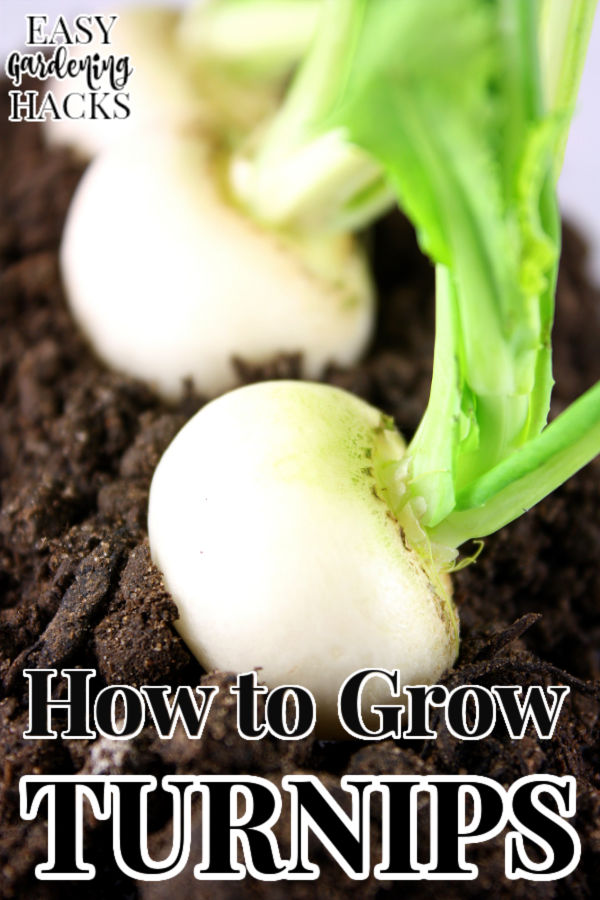Use these gardening tips to learn how to grow turnips in your garden this summer.

How to Grow Turnips
One of my favorite ways to cut carbs on the dinner plate is with making turnip fries. They have a wonderful taste and are just as delicious dunked in your favorite dipping sauce. Turnips are a root vegetable and they grow in cooler conditions. This means that you can plant them as early as late winter, depending on where you are, for a good harvest in just a couple of months before everything gets too hot. Here are some tips for growing turnips in your garden.
How to Grow Turnips from Seed
Turnips grow best when direct sown into the ground, but they can be started inside if you happen to live in a cold area. To start seeds indoors, make sure you have a sunny spot you can place them into for germination. Plant in a seed starting tray and push seeds in about ½ inch.
To start seeds outdoors, prepare your soil with some compost. Pick a sunny spot to plant your seeds. Plant when the soil is at least 50 degrees. Like indoors, you will want to push seeds in about ½ inch into your soil.
For more seed starting tips for turnips, check out this post.
How to Transplant Turnip Seedlings
Before transplanting turnip seedlings, make sure you take them through a hardening off process. This is a process of setting your seedlings outdoors for short periods of time on the days before you transplant them.
Transplanting turnips requires some extra care.Make sure you have prepared the soil with since aged compost and chosen a sunny spot to place them. Next, dig holes that are the same size as the containers your seedlings are currently growing in. You will not want to shake off any excess soil. Place each seedling into a hole and pat them into the ground. Water and keep the soil moist.
For more information on transplanting turnip seedlings, read this post.
Turnips and Pests
Turnips are susceptible to several pests. These include cabbage maggots/flies, aphids and snails/slugs. There are several ways to deal with each one.
For aphids, the easiest one to deal with is to simply hose them off when you see them, They can be green or black in color depending on your region.
For cabbage maggots and flies, the best way to deal with them is to prevent them in the first place. They can devastate a crop if they take hold causing roots to rot. To prevent them, make sure you are planting in a spot that hasn’t had an infestation over the winter This can be visually seen by digging up soil. Maggots and eggs are white and waxy in color. If you see no signs of the maggots or eggs, place some soil covering over and plant.
For snails and slugs, its best to pluck them off when you see them. You can kill them with a salt water solution.
How to Harvest Turnips
To harvest turnips, you can either harvest the leaves (the greens) or the root vegetable itself or both!
To harvest only the greens, just snip them off. Leave behind the root for later harvesting.
To harvest the root itself, simply put it up. You will want to wait until 45-55 days after planting before you harvest but don’t leave it in the soil much past 65 days or you will notice it will have a woodier texture and not be as delicious.
Plan to use these soon, especially the greens, after harvesting.
Leave a Reply